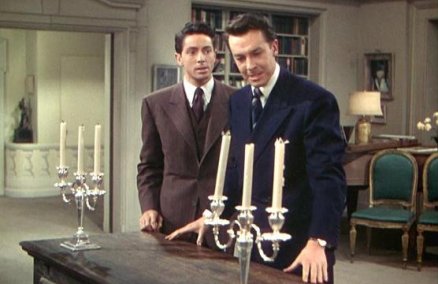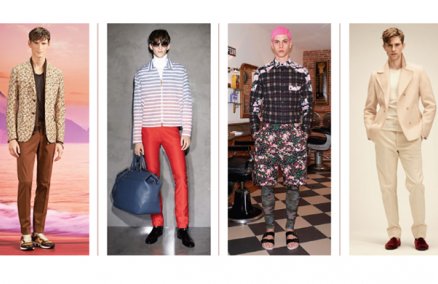DIARY OF A (SORT OF) NON-SMOKER
Week One
Used to smoke 1.5 packs per day. As of now, will be cigarette-free.
I am very determined that I shall quit smoking. I threw out all my lighters, cigarettes, ashtrays and cigarette butts (you never know how desperate you’ll get). From this day on I’ll have beautiful skin, white teeth and I won’t wheeze while trying to put my shoes on. I’ll be a glorious supermodel. I will start walking one kilometer every morning at 6:30am. I feel good. I can’t wait to tell everyone about the brand new me.
Later in Day One
Lasted only 10 minutes on my walk and had to rest. I tried watching American Idol without puffing away at 30 cigarettes. It just wasn’t the same. But it’s only the first day after all. I’ll be better tomorrow.
Week Two
Number of real cigarettes smoked: Zero. Number of imaginary cigarettes smoked: 2,159.
I’m feeling quite sanctimonious. I told everybody I was quitting and all were impressed. This now means I can eat all the chocolate I want.
I’ve been looking at myself in the mirror every five minutes to see if I look 10 years younger, if my teeth are any lighter, or if my skin is any better. People at work say I look a lot fresher and that I’m glowing (come on, it’s not like I’m pregnant) but I think they’re lying. I know for a fact that my butt is definitely at least five centimeters wider since last week. How can it be possible to put on this much weight in one week?
I might need glasses because everything looks like a cigarette. My favorite perfume is cigarette smoke. Thank goodness for those chocolates.
Week Three
Cigarettes smoked: 1 pack.
I was doing really well. Then I suddenly decided I had to have two cigarettes. I went to 7-Eleven and bought a pack and smoked five in a row. I came back to the office, told my office neighbor that I had smoked one cigarette, and she forced me to give the cigarettes away. When my boss found out, he was so mad he threw a pen at me. I promised that it was the last stick I was going to have.
Now I can’t stop. I’ve been hiding out and smoking with a mint in my mouth and a bottle of perfume in hand so no one will know. But every time I return to my desk, there is a photocopied newspaper article on quitting via laser treatment staring back at me.
I am on my way to quitting, it’s just that I’m having a little setback. I’m definitely going to quit tomorrow. Then I’ll have a healthy body, more money, and all those wonderful things. This is only a temporary lapse.
Week Four
Cigarettes smoked: So many I have lost count.
This was supposed to be my glory week: Week Four of Quitting Smoking. Now I’m sneaking at least 1.5 packs a day. It’s like the whole world is disappointed with me. My boss says he’s really annoyed that he has to spend so much time listening to my whining. My office neighbor casts looks of pity at me.
I was exercising but now I can’t bring myself to look at my new running shoes anymore as it’s too depressing. The only reason I still swim every day is so that I won’t forget that I actually do have lungs in my wheezy chest. Why is it so difficult? It’s not like I am smoking crack.
Week Five
Cigarettes smoked: I can’t be bothered to count. But I have gone up in strength.
I am imagining myself lying full of needles in an acupuncture studio in Chinatown and being rid of this smoking addiction. And if that doesn’t work, then I will next try acupuncture combined with hypnotherapy. I am willing to try any form of torture necessary. It’s just that I’m too busy at the moment to actually do it.
I should never have told anyone at work that I was quitting. My colleagues have plastered my entire cubicle with information on how to quit smoking. And the one who is giving me the hardest time is a smoker himself.
The entire exercise plan has collapsed. My shoes still look brand new and the hand weights I bought haven’t even been taken out of their plastic pack. Plus I’m eating all that extra junk I was using as a reward for quitting. Not only am I a smoker, but now I’m a fat one as well.
Just Do It
Quitting smoking using sheer willpower alone is notoriously difficult. Thankfully there’s now an array of different sources smokers can turn to for help with stubbing out the habit.
Acupuncture
Acupuncture focuses on applying pressure to the pressure points that will circulate qi to calm the nervous system. This helps to treat cravings, irritability and restlessness. Physicians treat patients according to their specific smoking habits, so treatments are designed specifically to suit individual needs. Registered TCM (traditional Chinese medicine) Physician and Acupuncturist Amy Liang (Kiat Siong Clinic and Acupuncture, Blk 465, #01-30 Crawford Lane, 6733-0777) suggests that initially the patient should have three visits on three consecutive days for 30 minutes. After this, treatments should be twice weekly. Liang charges $35 per treatment. Treatments that also incorporate weight management cost $48.
Laser Therapy
A bit like acupuncture without the needles, laser therapy works on a similar philosophy to the older science. A laser is applied to pressure points on the ears, nose, hands and wrists to stimulate the release of endorphins. The idea is to give the smoker feelings of relaxation, calm and well-being, thus reducing stress levels and the urge for a cigarette. Phoenix Laser Therapy Centre (26/F, Tower B, Ngee Ann City, 391B Orchard Rd., 6836-9305) claims their Quit Smoking Program is completed after only three hour-long sessions over three days. But quick fixes don’t come cheap: The total cost for the sessions is $640. Counseling is provided.
Nicotine Replacement Therapy
The way the Nicorette products work is to provide low levels of clean nicotine (nicotine without the harmful tar and carbon monoxide of cigarette smoke, the primary causes of cancer and cardiovascular disease), to help smokers curb their withdrawal symptoms.
There are three kinds of product. The Nicorette Gum is a sugar-free gum that can be consumed whenever cravings are experienced. The gum releases nicotine into the bloodstream through the mouth’s lining. They are available in two strengths. The 2mg product costs $19.90 for 30 pieces, and $58.80 for 105 pieces; the 4mg product costs $29.95 for 30 pieces, and $88.20 for 105 pieces. A full course of the gum usually takes around 16 weeks to complete.
The Nicorette 16-Hour Patch is designed for use throughout the day, so it’s put on in the morning and taken off before bed. It delivers a controlled dose of nicotine throughout the day, and as the smoker is slowly weaned off them, dose levels should be decreased. It’s available in three doses ($34.65 for seven 15mg patches; $31.50 for seven 10mg patches; $28.90 for seven 5mg patches) and it’s recommended that these are used for about 12 weeks.
To address the behavioral aspects of smoking, the Nicorette Inhaler allows smokers to still mimic the hand to mouth inhaling action of smoking, through a mouthpiece with a replaceable cartridge of nicotine. The amount of nicotine released is about eight to 10 times less than that in a cigarette. It’s recommended that six to 12 cartridges be used per day for a minimum of eight weeks, and then the number should be reduced. A box of 18 cartridges costs $26.25. None of the Nicorette products should be used for longer than six months.
Hypnosis
The theory behind using hypnosis to quit is that it puts the smoker in a state whereby the conscious mind is bypassed. By changing habits in the subconscious, it is supposed to be easier to change conscious behavior. But success depends largely on the smoker’s willingness to go into a hypnotic state. Certified Hypnotherapist El Solaris RP (9615-3348) suggests social smokers will need two sessions ($330) to stop smoking, while other smokers will need four sessions ($660). Single sessions are also available ($200).





























